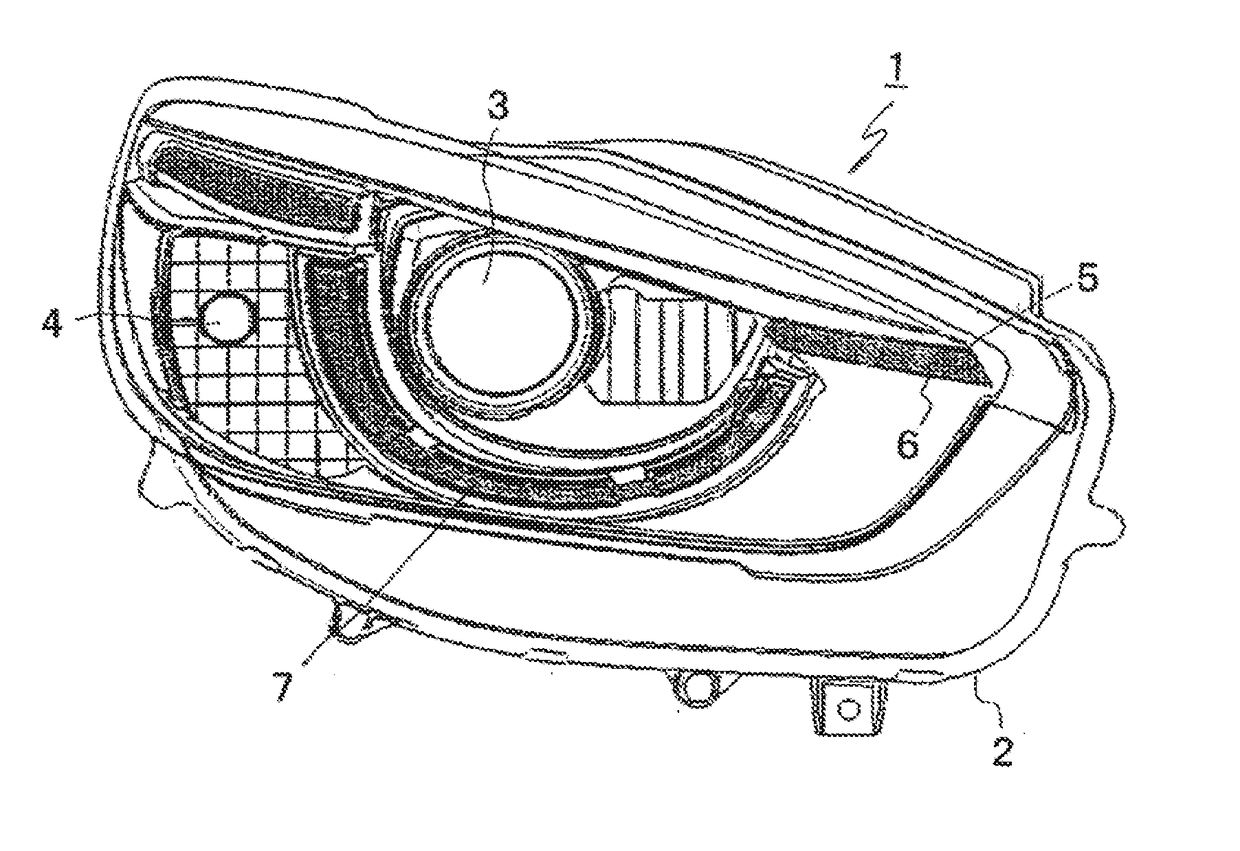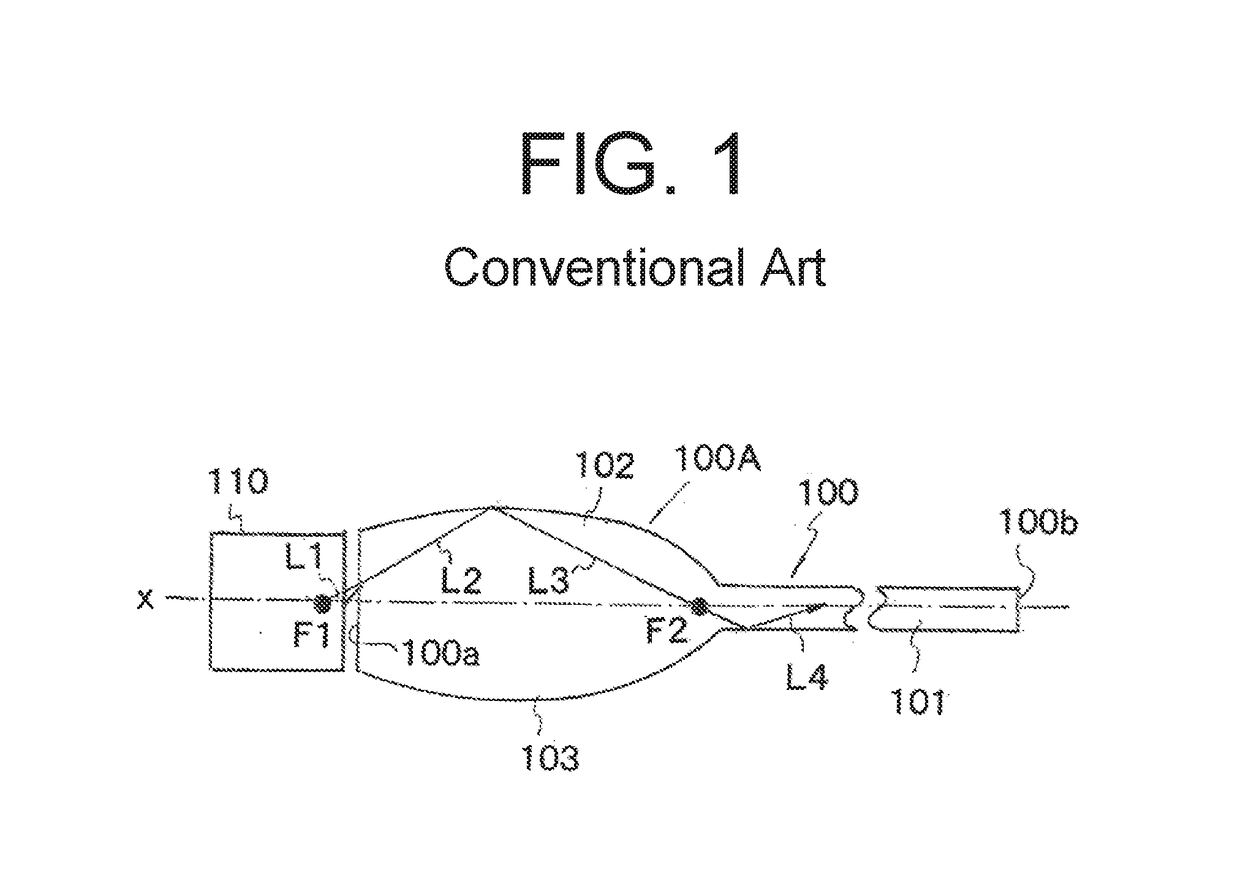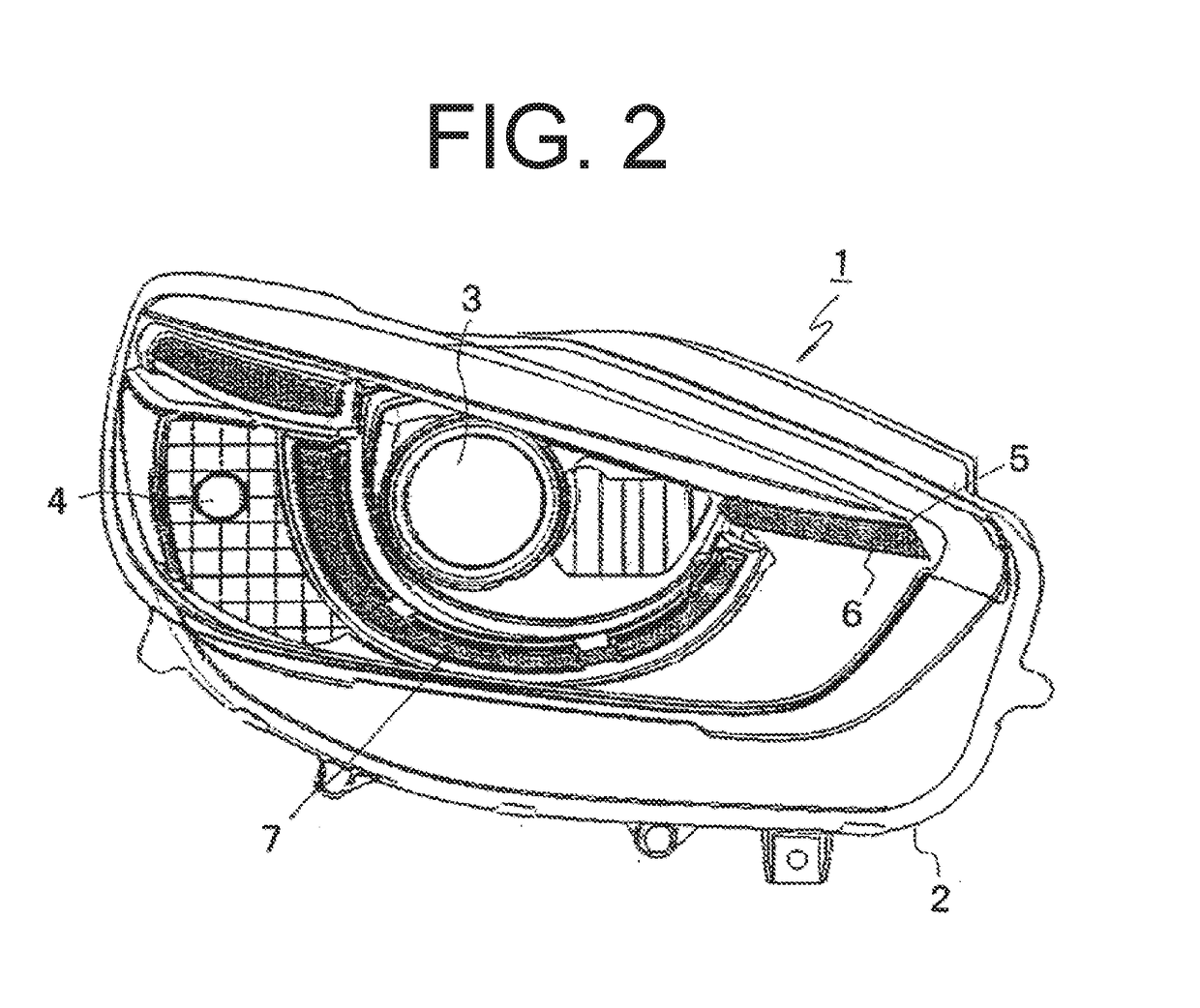Vehicle signaling light
- Summary
- Abstract
- Description
- Claims
- Application Information
AI Technical Summary
Benefits of technology
Problems solved by technology
Method used
Image
Examples
Embodiment Construction
[0029]A description will now be made below to vehicle signaling lights of the presently disclosed subject matter with reference to the accompanying drawings in accordance with exemplary embodiments.
[0030]Note that directions herein are on the basis of a posture of the vehicle signaling lights when installed in a vehicle body for use, but the front direction means a light output direction even when the vehicle signaling light is installed in a rear portion of the vehicle body to be directed to its rear side.
[0031]FIG. 2 is a front view of a rear-combination lighting device including a vehicle signaling light made in accordance with the principles of the presently disclosed subject matter FIG. 3 is a front view of the vehicle signaling light, FIG. 4A is a top plan view of respective light guiding lenses of the vehicle signaling light, FIG. 4B is a cross-sectional view of a light incident portion taken along line I-I in FIG. 4A, FIG. 5 is a rear view of the light guiding lenses of the ...
PUM
 Login to View More
Login to View More Abstract
Description
Claims
Application Information
 Login to View More
Login to View More - R&D
- Intellectual Property
- Life Sciences
- Materials
- Tech Scout
- Unparalleled Data Quality
- Higher Quality Content
- 60% Fewer Hallucinations
Browse by: Latest US Patents, China's latest patents, Technical Efficacy Thesaurus, Application Domain, Technology Topic, Popular Technical Reports.
© 2025 PatSnap. All rights reserved.Legal|Privacy policy|Modern Slavery Act Transparency Statement|Sitemap|About US| Contact US: help@patsnap.com



